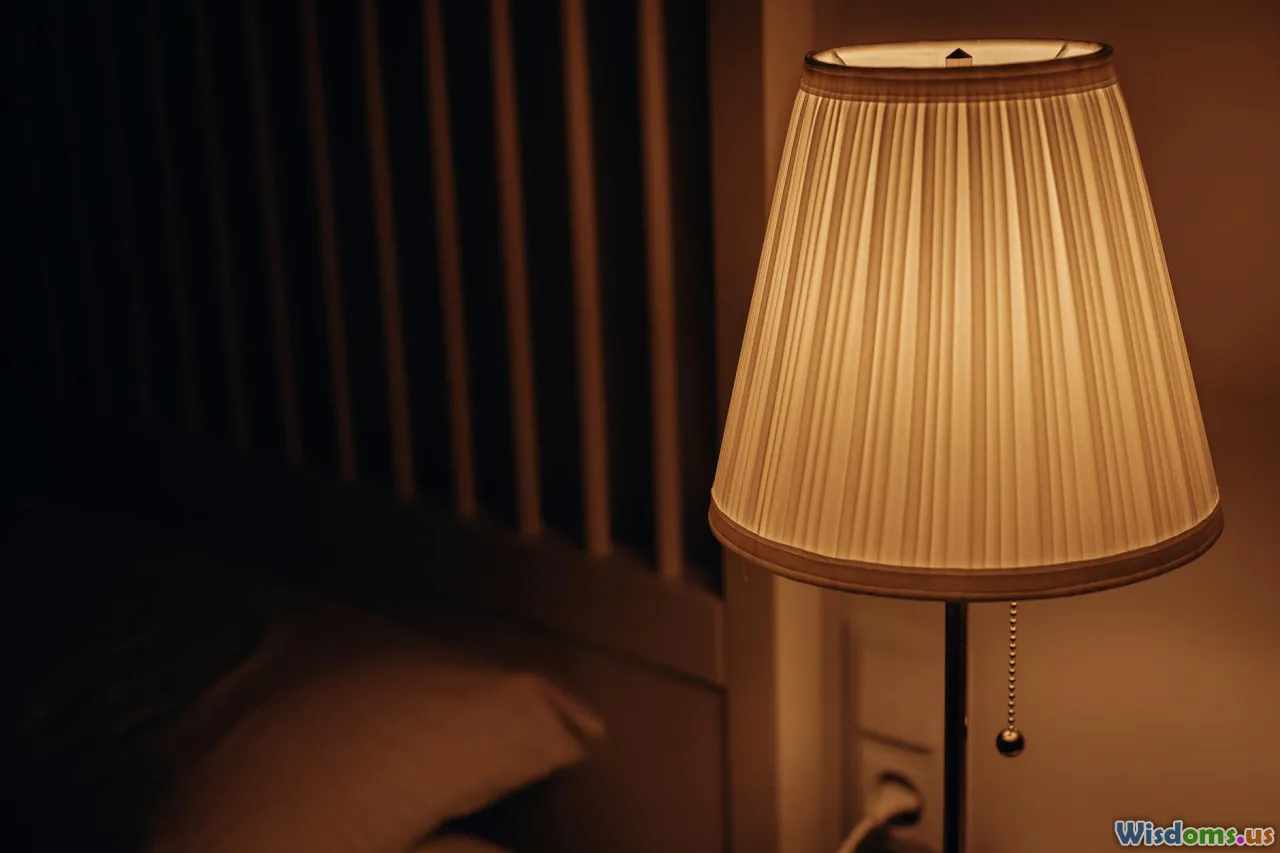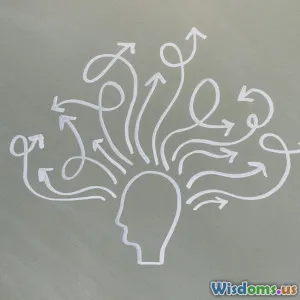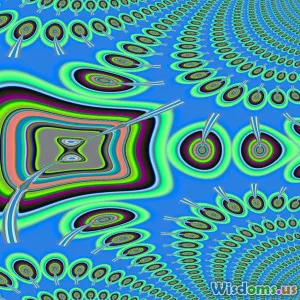
What Neuroscience Reveals About Consciousness and Nighttime Awareness
16 min read Explore how neuroscience unravels consciousness and nighttime awareness through new research and insights on sleep, brain activity, and dreams. (0 Reviews)
What Neuroscience Reveals About Consciousness and Nighttime Awareness
What happens when you drift off to sleep? For centuries, philosophers puzzled over the elusive phenomenon of consciousness: What does it mean to be "self-aware"—and how, during sleep, does our awareness mysteriously shift rather than simply disappear? Recent advances in neuroscience are demystifying these ancient riddles, shining a spotlight on the brain's enigmatic transitions between waking and nocturnal states. Exploring the science of consciousness during the night unveils critical insights into both the resilience and the fragility of the human mind.
The Building Blocks of Consciousness

The story of consciousness begins at the cellular level inside the brain. Neurons—specialized electrical cells—communicate via intricate networks, generating patterns of activity that, scientists believe, give rise to every mental experience. When you are awake, billions of these neurons coordinate in characteristic ways that support thought, self-reflection, and sensory engagement.
Surprisingly, it's not just the amount of neural activity that matters. What truly counts is the integration of information. One notable theory—Integrated Information Theory (IIT)—proposes that consciousness emerges when information is both highly differentiated (complex) and highly unified (integrated). Imagine standing in Times Square: thousands of lights, sounds, and movements flood your senses, but your mind weaves them into a conscious stream of experience.
At the physical level, certain structures stand out as consciousness hubs:
- The cerebral cortex: the brain's outer layer responsible for higher-order functions.
- The thalamus: a central relay station for sensory signals.
- Reticular activating system (RAS): modulates alertness and attention.
Disruption in these regions—due to trauma, seizures, or anesthesia—often leads to altered states of awareness, hinting at their crucial role. Imaging studies using fMRI and EEG consistently show highly organized electrical activity in these structures during wakefulness. Intriguingly, as consciousness fades, these electrical patterns become less synchronized and more chaotic.
Nightfall and the Gradual Descent Into Sleep

Night doesn't flip a biological "off switch." Instead, entering sleep is a gradual process, orchestrated by hormonal cues and neural signals. Circadian rhythms—regulated primarily by the hypothalamus and the hormone melatonin—govern the ebb and flow of alertness and prepare the body for rest as darkness falls.
Transitioning into sleep consists of several well-mapped stages:
- NREM Stage 1: Lightest sleep. Drift in and out and can easily be awakened. EEG picks up mostly alpha and theta waves.
- NREM Stage 2: Deeper, with signature sleep spindles and K-complexes in EEG.
- NREM Stages 3 & 4 (Slow-Wave Sleep): Dominated by slow, high-amplitude delta waves—most restorative for the body.
- REM (Rapid Eye Movement): Paradoxically, the brain becomes nearly as active as in wakefulness, yet the body is paralyzed. Vivid dreams abound.
Each stage is associated with unique changes in brain connectivity and consciousness:
- During deep NREM, awareness of the environment is suspended almost completely. There is little to no conscious thought, as demonstrated by the overwhelming difficulty of waking someone and their confusion if disturbed.
- During REM sleep, the cortex is highly active. Despite unconsciousness to the outside world, many people experience intense, story-like dreams—a fascinating reflection of "internal consciousness."
Notably, sleepwalkers typically arise during deep NREM stages, performing actions unconsciously. Contrast this with REM: Here, vivid internal experiences unfold without actual movement. These diverse manifestations reveal how consciousness is a spectrum, ever-changing through the night.
Dreams: The Inner Theater of Nighttime Awareness

What could be more mysterious than dreaming? Inside REM sleep, the conscious mind is, paradoxically, unleashed—producing imagistic, sometimes bizarre narratives. How does modern neuroscience account for this nightly phenomenon?
Research demonstrates that during REM dreams, sensory-processing areas in the brain (like the occipital and temporal lobes) become highly active, while regions responsible for logic and self-criticism (notably the dorsolateral prefrontal cortex) are less active. This accounts for both the lifelike vividness and the strangeness of dreams: our internal theater is running high-definition content without its sharpest editor.
Experiments using polysomnography (EEG plus eye tracking and muscle tone monitoring) have mapped specific brainwave patterns to active dreaming. But in recent years, more advanced techniques—such as real-time fMRI and PET scans—enable researchers to observe and even partially decode dream images. Stanford University researchers, for example, reconstructed simple dream images from fMRI data, revealing an exciting frontier in "reading the dreaming brain."
Lucid dreaming—the rare state where individuals realize they're dreaming and can even exert control—offers remarkable clues. In such states, critical-thinking areas reawaken, bridging the gap between full consciousness and the dream state. Novices can increase their chances of lucidity by keeping dream diaries and rehearsing reality checks (e.g., attempting to read text or glance at a clock in a dream). What emerges is a dynamic blend between subconscious imagination and waking self-awareness.
Disorders That Illuminate the Architecture of Awareness

The brain's nightly dance between consciousness and sleep can go awry, producing a spectrum of sleep and awareness disorders that provide essential clues to neurobiology.
1. Sleepwalking and Parasomnias:
Sleepwalking occurs in deep NREM sleep, a time when most consciousness is offline—yet sufferers can perform complex routines (even eating or driving) while appearing unresponsive. This suggests that parts of the motor cortex and brainstem remain active even while cortical consciousness is suspended. Neurologists now believe that these activities reveal a primitive form of awareness, albeit stripped of introspection.
2. Narcolepsy:
Narcolepsy disrupts the boundary between sleep and wake, causing irresistible bouts of sleep during the day. Sufferers may slip into REM sleep within minutes, sometimes while conscious—a state called cataplexy. This condition has illuminated the role of the neurotransmitter hypocretin (or orexin) in stabilizing wakefulness. Its absence leads to the sudden and unpredictable collapse of normal consciousness.
3. Insomnia:
Insomnia is another revealing anomaly. Chronic insomniacs exhibit high-frequency brainwave activity even while appearing to sleep. Functional MRI studies confirm that "hyperarousal" persists in the cortex, preventing normal deactivation. This shows that normal sleep and unconsciousness depend on the brain's intricate ability to downshift its internal operations.
Through these conditions, neuroscientists have mapped the biological roots of conscious and unconscious states—laying the groundwork for ever more precise treatments via deep brain stimulation, noninvasive brain modulation, and innovative medications.
How Neuroscience Is Hacking Nighttime Awareness

Cutting-edge tools and technologies now allow researchers—and even curious consumers—to probe consciousness like never before, transforming our understanding of nighttime awareness and even enhancing it.
EEG Headbands and Sleep Tracking
Consumer EEG headbands, such as those from Muse and Dreem, track brainwaves overnight, providing users with individualized "sleep graphs" showing time spent in light, deep, and REM sleep. Researchers use even more advanced systems in sleep labs, mapping neural oscillations in real time. Some devices let users experiment with targeted auditory cues delivered during specific sleep stages, potentially enhancing dream recall or nudging the brain into deeper, more restorative sleep.
Brain Stimulation Methods
Research teams are exploring brain stimulation techniques—like transcranial direct current stimulation (tDCS) and transcranial magnetic stimulation (TMS)—to modulate consciousness. Experiments in Zurich have demonstrated that applying gentle stimulation over the prefrontal cortex during REM sleep can increase the likelihood of lucid dreaming. In sleep medicine, TMS is also being tested for treating insomnia and even depression, suggesting the far-reaching impact of these interventions.
Brain-Computer Interfaces (BCIs) and Sleep Communication
Remarkably, scientists have begun to probe direct communication with sleeping minds. In 2021, Northwestern University researchers devised a "two-way communication" protocol with lucid dreamers, using spoken math problems and observing correct responses via eye movements or facial twitches. While still in its infancy, this breakthrough hints at a future in which dream content might be influenced or queried directly.
Such neurotechnologies open up both promise and philosophical quandaries. If consciousness can be meaningfully altered, deepened, or communicated with during sleep, what does it mean for personal identity, privacy, and the boundaries of self-awareness?
The Ethical Horizon: Manipulating Conscious States

As neuroscience pulls back the curtain on consciousness and sleep, new ethical considerations arise, ranging from informed consent to the sanctity of private mental states.
- Privacy and Monitoring: Consumer sleep trackers can harvest immense volumes of personal neurodata. Regulations lag behind technology, raising questions about who owns (and can profit from) this data.
- Cognitive Enhancement: As tools for inducing lucidity or deepening sleep become more sophisticated, should these be regulated like medical devices? Could they introduce new pressures to optimize sleep, productivity, or even dream content?
- Vulnerable Populations: Children, those with PTSD, and other sensitive groups may respond uniquely, or adversely, to interventions aimed at manipulating nighttime awareness. Caution and robust testing protocols are crucial.
Mindfulness practices, meditation, and meditative movement bring another perspective by showing that conscious states—including those achieved during meditative or hypnagogic (falling asleep) phases—can be beneficially tweaked. Still, the line between helpful modulation and risky manipulation remains an ongoing societal conversation.
Practical Advice for Optimizing Nighttime Consciousness

While most can't access a neuroscience lab, much is already understood about fostering brain health and harmonic sleep cycles. Here are actionable steps to support natural rhythms of consciousness:
- Prioritize Consistency: Maintain a stable bedtime and wake-up time—even on weekends—to support healthy circadian rhythms.
- Screen Curfew: Avoid bright screens for at least an hour before bed, as blue light suppresses melatonin production and disrupts the brain's prepping for sleep.
- Wind-Down Rituals: Create a calming pre-sleep routine—gentle stretches, reading, or meditation—teaching the brain to downshift.
- Reflect to Remember: Keep a dream diary or jot down fragments upon waking. This practice strengthens the dawn connection between sleepy subconscious and alert awareness, increasing dream recall and, over time, the likelihood of lucid dreaming.
- Daylight Exposure: Get natural sunlight during the day, which calibrates the suprachiasmatic nucleus in the hypothalamus for more robust sleep–wake cycles.
- Mindfulness Practices: Even guided meditations before sleep can train awareness, increasing the clarity of both waking and dreaming consciousness over time.
Where Science and Mystery Intertwine
As researchers piece together the complex puzzle of consciousness and nighttime awareness, two things become clear: The brain is breathtakingly intricate in how it enables and sculpts awareness, and the frontiers of its nighttime mysteries are only starting to unfold. From the deep stillness of dreamless sleep to the hallucinatory logic of REM, the dimensions of the mind at night fuse ancient mystery with innovative science. Our understanding stands poised—like the mind on the edge of sleep—between the glowing certainties of fact and the fertile dark of the unknown, inviting further inquiry and profound wonder.
Rate the Post
User Reviews
Popular Posts


















